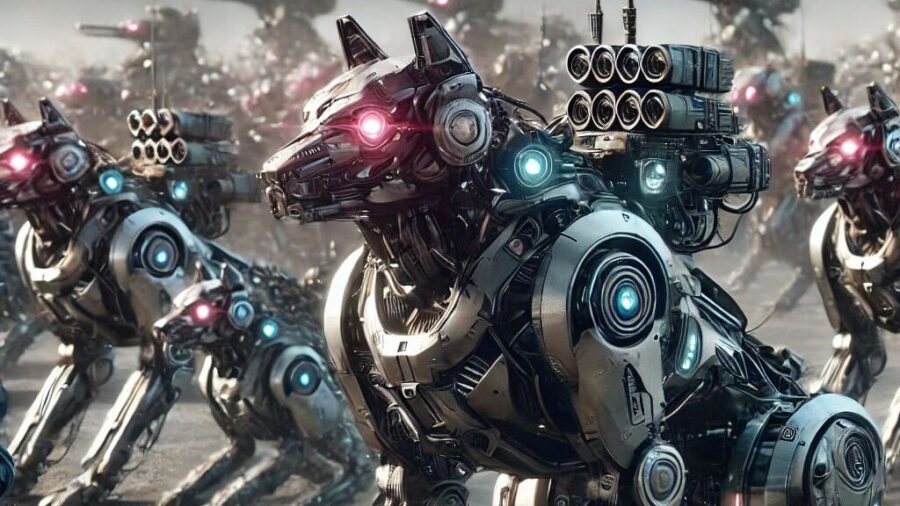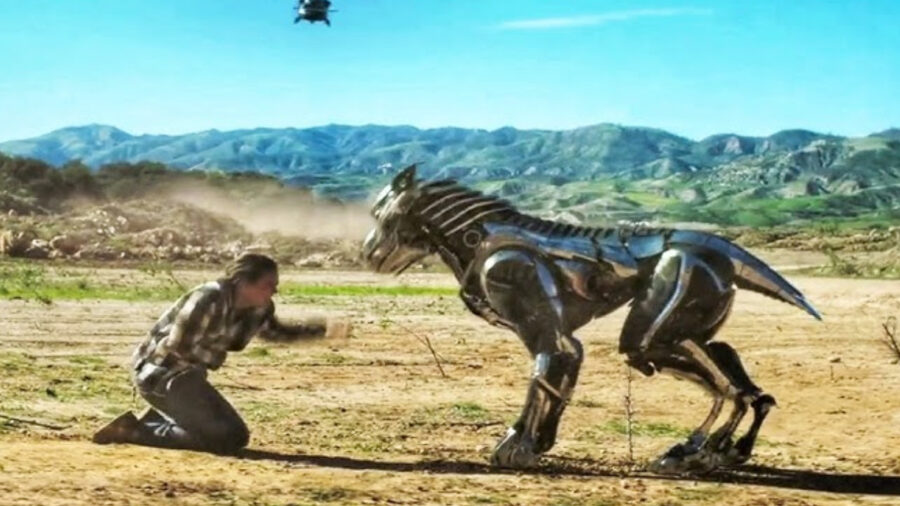The Robot Dog Army Of Ukraine

Warfare technology saw a major developmental leap during both World Wars, and unmanned drones have been around for just as long; the first unmanned aerial vehicle, the Kettering Bug, was actually deployed in 1918. Though it saw limited use during the war, it was a stepping stone towards modern unmanned aerial vehicles (UAVs). However, as if artificial kill-birds aren’t enough, the recent development in technology resulted in the creation of actual, robotic dogs of war—a robot dog army—which are now deployed to Ukraine.
Take a look for yourself:
The robot dog army was actually supplied by Robot Alliance, a British company, and the individual units themselves aren’t autonomous, though we suspect that the creation of such models isn’t far behind, given the strides in AI technologies. Instead, all thirty of these mechanized puppies are individually remote-operated by army technicians and represent a walking version of the ubiquitous aerial drones. Their purpose in the Russia-Ukraine conflict is to sniff out Russian soldiers—a figure of speech; the robots don’t have “sniffing” sensors and locate booby traps.
When covered by a camouflage paint scheme and a camouflage blanket, units of the robot dog army can’t be detected.
Units of the robot dog army are meant to explore the inside of buildings, trenches, woodlands, and all other areas that are inaccessible to flying drones. According to the robot dog army specs, the doggies can run up to 9 mph, which is the running speed of a recreational runner (jogging is only about 4-6 mph), on a five-hour-long battery life, and a range of up to two miles. Additionally, its onboard data can be instantly destroyed if any of these units are captured by an opposing force to prevent the enemy from gaining any information.
Their purpose in the Russia-Ukraine conflict is to sniff out Russian soldiers—a figure of speech; the robots don’t have “sniffing” sensors and locate booby traps.
Each individual unit costs around $4400 to $8800, depending on the model and the complexity of its setup, and when covered by a camouflage paint scheme and a camouflage blanket, units of the robot dog army can’t be detected. This applies to both visual detection and detection using thermal imaging, which means a lot considering that the harsh winter environments of the area tend to make thermal signal detection much easier.

The suppliers of the robot dog army, however, are security companies that provide a wide range of protection services, as well as military training and drone surveillance and security. In other words, they’re not robot manufacturers, and the robots they’re supplying to Ukraine are actually Chinese-made Unitree Go2 Pros, which are quadrupedal equivalent of DJI quadcopters. They’re efficient, high-spec machines that are easily available to anyone at a relatively low cost.
According to the robot dog army specs, the doggies can run up to 9 mph, which is the running speed of a recreational runner, on a five-hour-long battery life, and a range of up to two miles.
Now, it’s important to note that these little robot dog army machines are actually equipped with some rather powerful hardware, and it is entirely possible that the versions delivered to Brit Alliance—who in turn supplied them to Ukraine—are actually modified with custom software to better fit military applications. And apart from being scouts, they can also carry payloads of up to nine pounds, which implies carrying ammo or other supplies over the battlefield—but it’s only a matter of time before someone starts equipping them with weaponry.











